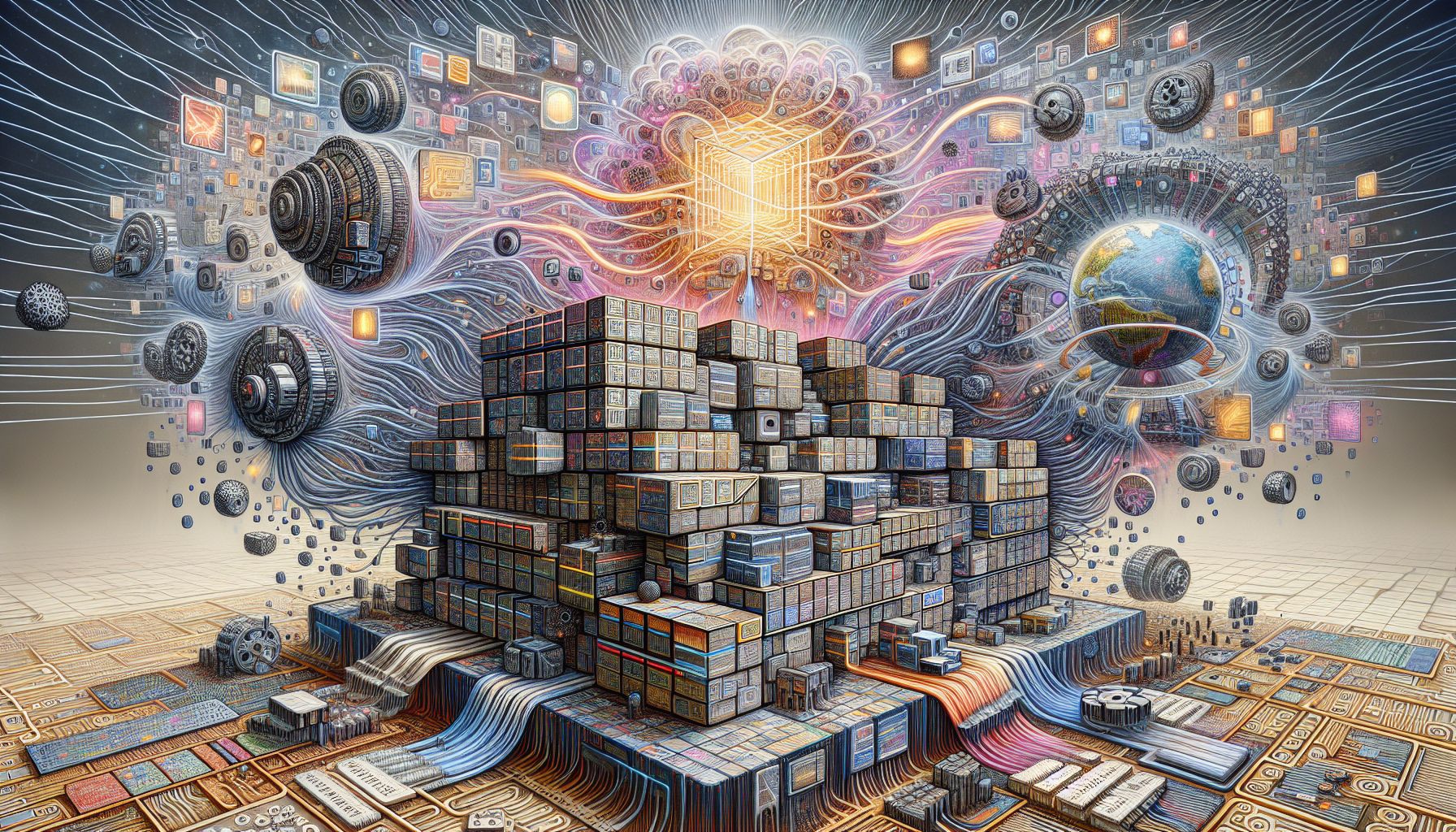📌 Let’s explore the topic in depth and see what insights we can uncover.
⚡ “Ever heard of a competition where computers fight to see who’s the best at recognizing dogs, buses, or even sushi? Welcome to the jaw-dropping world of the ImageNet contest and the astonishing leaps forward in deep CNN technology!”
In the dynamic field of artificial intelligence (AI), one can’t help but marvel at the revolutionary strides made possible by deep learning algorithms. From recognizing images, interpreting natural language, and even mimicking the human brain’s self-learning capabilities, deep learning has truly reshaped the AI landscape. One of the pivotal milestones in this journey is the ImageNet competition and the breakthroughs in Convolutional Neural Networks (CNN). This blog post will delve into the fascinating world of the ImageNet competition, explore deep CNN breakthroughs and their implications, and help you understand why these developments matter. 🌐
🎯 The ImageNet Competition: A Gateway to AI Innovation

Unveiling AI Mastery: ImageNet Competition & Deep CNN Breakthroughs
The ImageNet competition, formally known as the ImageNet Large Scale Visual Recognition Challenge (ILSVRC), first took the AI community by storm in 2010. Inspired by the annual Olympics, this competition was not about athletes flexing their muscles, but about machines flexing their computational power and intelligence. ImageNet is essentially a vast database of annotated images designed to fuel research in object detection and image classification. The challenge? Develop an algorithm that accurately identifies and classifies objects within these images. Imagine teaching a machine to discern between a cupcake 🧁 and a muffin 🍞, or between a poodle 🐩 and a golden retriever 🐕. It’s not a piece of cake, is it?
🚀 Convolutional Neural Networks: A Turning Point
Before diving into the specifics of the CNN breakthroughs, let’s simplify what a CNN is. Picture yourself in a massive library 📚, with millions of books but no categorization. A nightmare, right? Now, imagine a librarian comes in and starts organizing the books based on genres, authors, and publication years. Suddenly, finding your favorite mystery novel becomes a breeze. In essence, that’s what a CNN does - it filters and organizes vast amounts of data into recognizable patterns. In the early years of the ImageNet competition, traditional machine learning algorithms were the go-to. However, the 2012 competition marked a significant turning point. A team from the University of Toronto, led by Alex Krizhevsky, Ilya Sutskever, and Geoffrey Hinton, introduced a deep CNN model named “AlexNet”. This model outperformed all others by a whopping 10.8 percentage points, igniting a wave of interest in deep learning.
🧩 AlexNet and Beyond: Unpacking the Power of Deep CNNs
The success of AlexNet was a game-changer. But why was it so revolutionary?
First, AlexNet was deep. With multiple layers designed to recognize patterns at varying levels of complexity, this model emulated the hierarchical pattern recognition observed in the human brain. Think of it like peeling an onion 🧅 - each layer uncovers a deeper level of understanding. Second, AlexNet was convolutional. Instead of treating input data as a flat array, it recognized two-dimensional shapes, much like how our eyes perceive images. Imagine trying to recognize a pizza 🍕 by looking at each ingredient individually versus seeing the whole pizza - which would be easier? Post-AlexNet, many other deep CNN models like VGGNet, GoogLeNet, and ResNet have further pushed the boundaries of image recognition. These models have become deeper and more complex, improving the accuracy of image classification tasks and opening new avenues for AI applications.
🌟 Implications of Deep CNN Breakthroughs
The breakthroughs in deep CNNs have had far-reaching implications. From everyday applications like photo tagging on social media and virtual assistants on smartphones, to advanced uses in healthcare for disease detection and autonomous vehicles, the impact is profound. Notably, these breakthroughs have democratized AI, making it more accessible and useful to the general public. It’s like having a personal assistant in your pocket who can identify objects, understand spoken commands, and even predict your next need based on patterns in your behavior. It’s the stuff of science fiction, made real!
🧭 Conclusion
The ImageNet competition and the ensuing breakthroughs in deep CNNs have catalyzed a new era in artificial intelligence. The journey from teaching machines to recognize objects in images to developing algorithms that can emulate the human brain’s learning abilities is nothing short of phenomenal. The strides made in this field are akin to the shift from using a simple compass 🧭 to navigate, to using an advanced GPS 🛰️ system that predicts traffic, suggests alternate routes, and guides you to your destination. And just like modern GPS systems, the journey of deep learning is still evolving, promising more exciting developments in the future. So, whether you’re an AI enthusiast, a professional in the field, or just a curious mind, keep an eye on deep learning. It’s not just about machines becoming smarter - it’s about reshaping our world in ways we’ve only begun to imagine.
📡 The future is unfolding — don’t miss what’s next!
